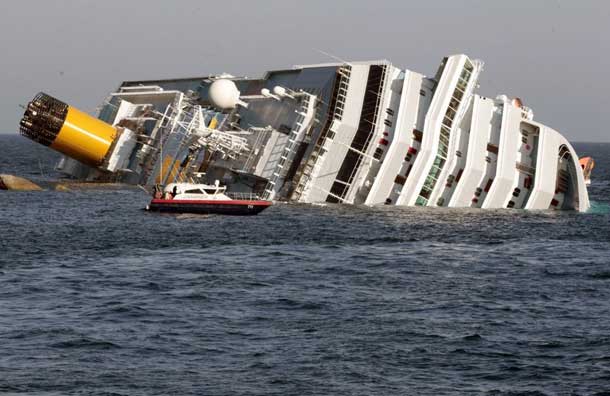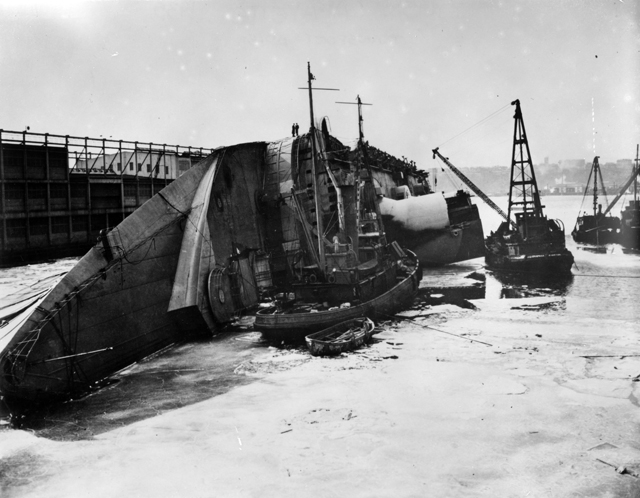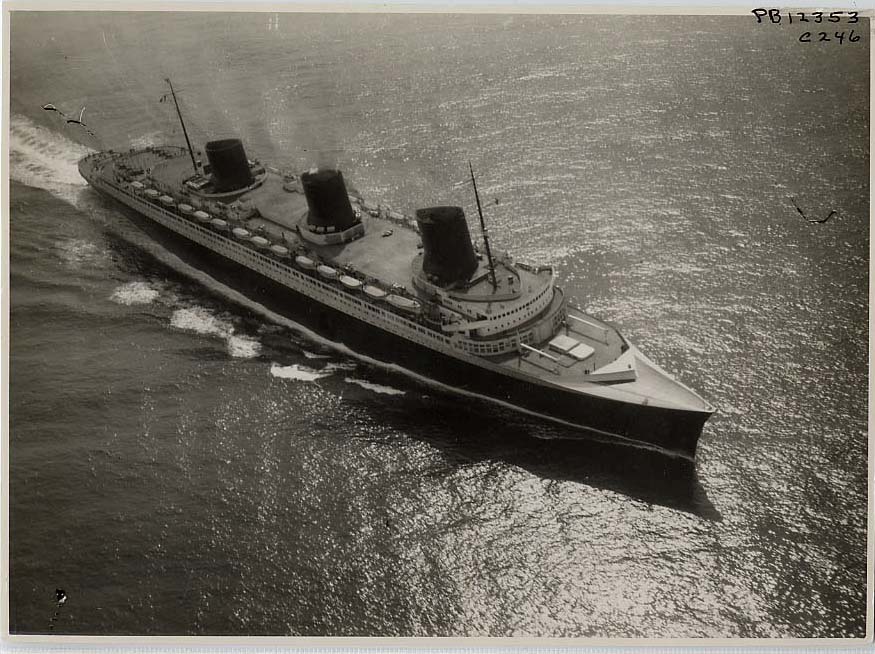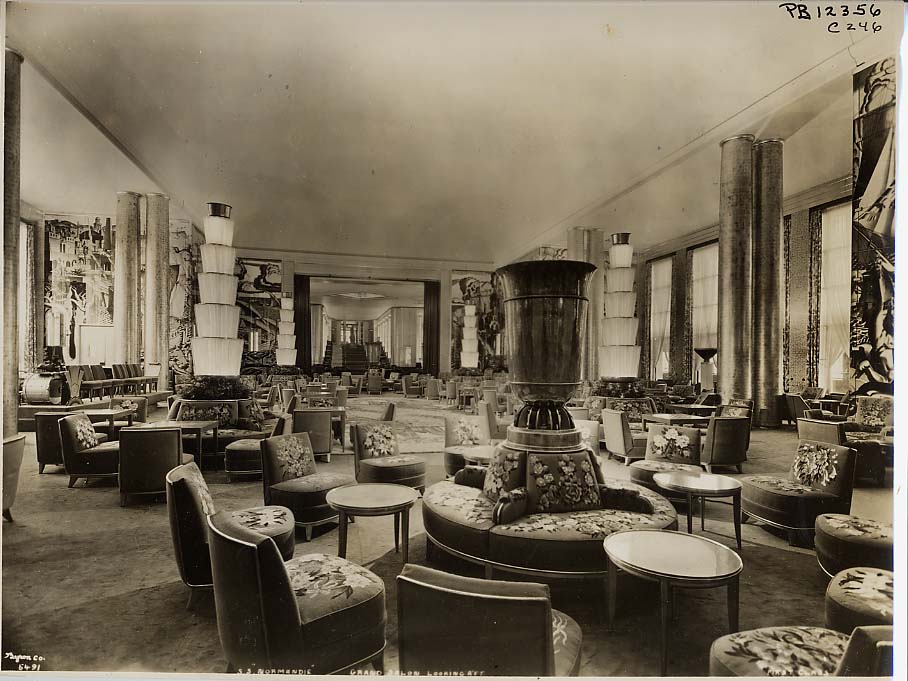The Costa Concordia disaster is not the first time a large cruise liner has come to rest on its side. To some who are well-versed in maritime news and shipwrecks, the images of the cruise ship Costa Concordia lying on her side off the Italian coast might look familiar. In 1942, a top-of-the-line cruise ship, the Normandie, was undergoing conversion to become a troop transport ship in New York Harbor when she caught fire and capsized, coming to rest on her side, much like Costa Concordia.
Harvey Ardman’s Normandie: Her Life and Times, from the Library’s stacks, provides a very detailed history of this legendary ship. Construction began on the Normandie in early 1931. At the time she would be the largest ship ever built: 1,029 ft. long with a maximum breadth of 119 ft., weighing in at a staggering 27,675 tons. Compare this to Costa Concordia‘s 952 ft. long and 116 ft. wide. Normandie was launched in October 1932, then spent three years being outfitted for her maiden voyage in 1935.
Normandie’s designers placed great emphasis on comfort and decor for first-class staterooms. According to Ardman, in terms of square footage, 75% of the Normandie was dedicated to lavish first-class cabins and other first-class accommodations. No other ship, before or since, has dedicated so much to first-class. In fact, Normandie’s popularity was called into question, as the majority of Americans who made up the boom in cruise tourism could not afford to travel on such a luxurious liner.
The Normandie would not live out her life as a luxury liner for the rich and famous, however. In 1939, following the outbreak of World War II, Normandie was interned at New York Harbor. Two years later, when the United States entered the war, the US Coast Guard seized control of Normandie. She was renamed USS Lafayette, and her conversion to a troop transport ship began in January, 1942.
One month later, on February 9, sparks from a welding torch operated by one of the workers fell onto a stack of life jackets made of a highly flammable material. Because the ship was still being converted, the woodwork had yet to be removed, and the fire spread quickly. The ship’s fire suppression system had also been disconnected during the conversion, and American fire hoses did not fit the ship’s French outlets.
Hours later, the New York Fire Department considered the fire under control, but the sheer weight of the water pumped onto the ship caused it to list to port. Late that night, with fire crews still keeping watch, Normandie suddenly capsized completely, coming to rest on her side at an angle of 80 degrees. As she rolled, Normandie nearly crushed a fire boat under her immense weight. The terror felt by New York firefighters could not have been unlike that felt by the passengers aboard Costa Concordia.
Here is where residents of Giglio, Italy, as well as Costa Cruises, hope the similarities between Normandie and Costa Concordia end. The wreck of the Normandie sat in New York Harbor for over a year. Finally, in what is perhaps the most expensive salvage operation in history, Normandie’s superstructure was removed and she was righted in August, 1943. It wasn’t until 1946 that she was finally sold for scrap.
If the tale of the Normandie is any indication, the residents of Giglio can expect the wreck of Costa Concordia to mar the beautiful coastal skyline for quite some time. Italians can take solace in the fact that salvage operations on Costa Concordia began a mere month after the disaster, rather than a year. If you would like to learn more about the fascinating story of the Normandie, pay a visit to The Mariners’ Museum Library and check out Ardman’s Normandie: Her Life and Times or any number of our other resources.



